
views
- Collect dry, brittle pieces of timber, kindling, and large logs and branches to feed your fire.
- Stack your wood in the middle of a clear, dry surface and place rocks around the perimeter to contain the fire.
- Light your fire using matches, a lighter, or a piece of steel and flint.
Gathering Firewood
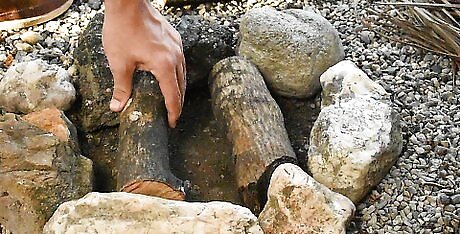
Buy pre-cut firewood to save yourself time. Pre-cut firewood is the ideal option for making a fire at home, and it’s also a safe bet for starting a fire outdoors. Having ready-to-use firewood will spare you the time, effort, and uncertainty of searching for usable firewood in the surrounding area. This is especially a good idea if your campsite doesn’t allow you to collect wood from the surrounding area. Camping tip: If you are visiting a national park and campground, find out beforehand if they prohibit the use of outside firewood and sell their own pre-cut logs on site, or if they forbid the gathering of firewood on their land.
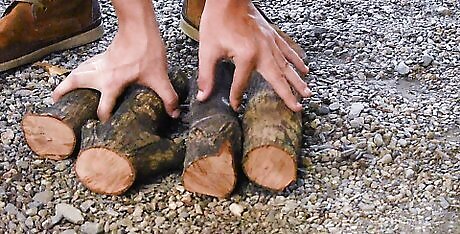
Use artificial fire logs for a purely decorative fire. Manufactured logs combine sawdust and paraffin wax for an easy-to-light, clean-burning fire. These logs are great because you can light them without any starting material, and they leave very little mess behind. However, they don’t create the same heat as a regular, wood-burning fire would. You can use artificial fire logs in both indoor fireplaces and outdoor fire pits.
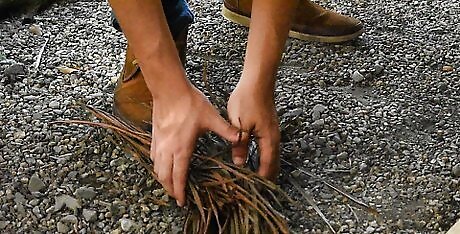
Find small, dry materials to use as tinder for your fire. Tinder is an easy-to-light material that helps to start your fire. Things like dry grass, leaves, shredded tree bark, or newspaper are all ideal choices. If you’re in a bit of a pinch, tortilla chips make great tinder. Tip: Some stores sell pre-made tinder. Another option is to make your own tinder ahead of time by breaking up larger pieces of wood.
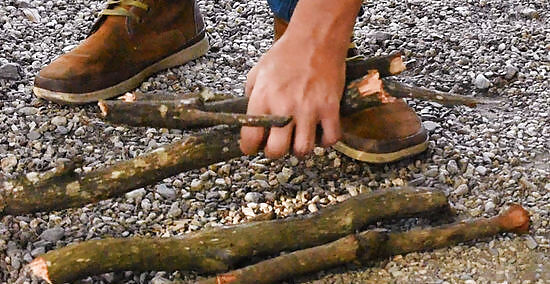
Find dry, medium-sized pieces of wood to serve as kindling. Kindling is material that burns easily when it comes into contact with burning tinder but is difficult to light on its own. Things like small sticks, twigs, and medium-sized pieces of bark make great kindling. Just make sure that the items are completely dry before putting them in your fire. Cut large pieces of wood into smaller pieces with an axe or knife to create kindling.
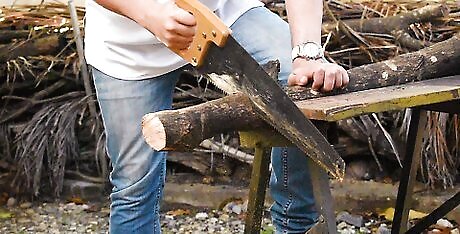
Collect dry, brittle logs in a variety of sizes to act as fuelwood. Fuelwood consists of logs that will burn longer and keep your fire alive. Look for dry, brittle wood ranging in size from large branches to thick logs. Use these to top off your fire as needed while it burns. Different types of wood burn at different speeds and have different properties. For example: Hardwood, like oak and maple, will take longer to start burning but burn for a long time. Softwood, like pine and cedar, burns fast and will likely crack and pop while burning because of the resins inside.
Creating a Fire Structure
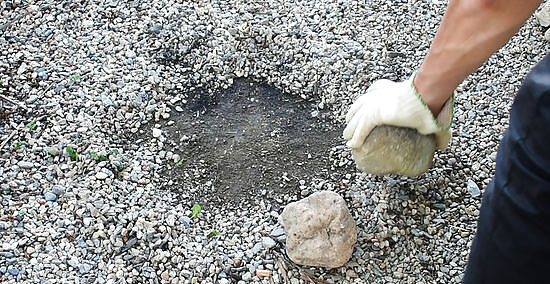
Find a clear, dry spot to build your fire. Choose a spot that is at least 6 feet (1.8 m) away from trees, bushes, and low-hanging branches. Clear the area of dry leaves, twigs, or other items that could ignite and cause the fire to spread. Make sure the fire spot is on dry ground. Some campsites have designated areas or pre-made fire pits where you can build your fire. Build a circle of large rocks measuring about 3 feet (0.91 m) or 4 feet (1.2 m) in diameter to mark where you’re building the fire. Never build a fire anywhere within 6 feet (1.8 m) of your shelter or tent if you’re sleeping outdoors. Soak the ground around your fire with water to help prevent it from spreading.
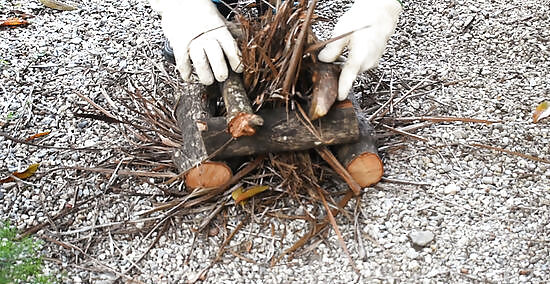
Construct a crisscross fire for an easy-to-build structure. Place the tinder material at the center of your fire bed. Next, place kindling on top of it in a crisscross pattern so that the pieces form a square grid. Lay the fuelwood on the very top in the same crisscross pattern. Tip: Be sure to leave gaps between the burnable materials when you stack them to allow for airflow so that oxygen can feed your fire.
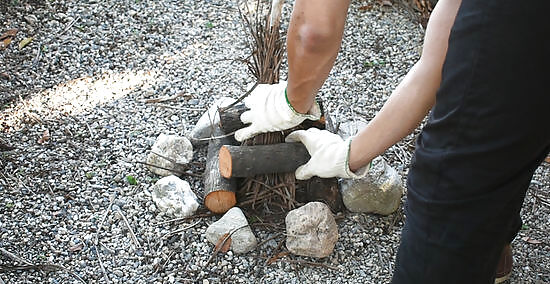
Make a teepee structure for an easy-to-light fire. Bunch your tinder material into a ball that is approximately 4 inches (10 cm) in diameter. Stack pieces of kindling together in a teepee-like shape around the tinder, with an opening on one side. Lean pieces of fuelwood against each other to form a frame around the tinder and kindling, leaving a gap in the same spot that you did for the kindling. Note: This is an alternative to building a crisscross fire structure. Don't do both! The gap in the side of the teepee allows oxygen to get in and feed the flames.

Set up a "log cabin" fire structure to make a fire that’ll burn longer. Place your tinder material in the middle of the fire site. Then, hold your kindling upright to form a teepee around the tinder in the center. Place two pieces of fuelwood on either side of the teepee, then lay two more pieces across them perpendicularly to form a square frame around the teepee. Add 2 or 3 more layers of fuelwood to the “log cabin.”
Lighting the Fire
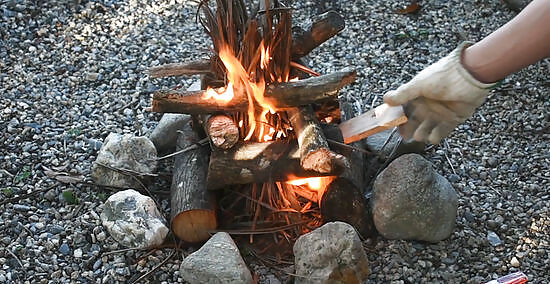
Use a lighter or matches to set the tinder ablaze. The simplest way to light your fire is by using simple fire starters like a lighter, torch, or some matches. Carefully hold the flame to a piece of tinder at the center of your pile of wood until it starts to burn. Always have a bucket of water, hose, or fire extinguisher at the ready in case the flame gets out of control. Gently blow on the lit tinder to help the flame grow. For the best results, light the tinder from several sides to ensure that it burns properly.
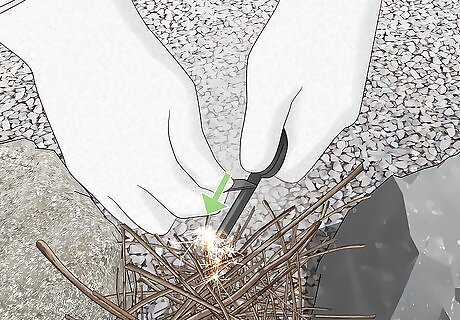
Create a spark with a piece of flint and steel. Using a flint and steel set is an excellent alternative to lighters and matches. Hold the steel and flint close to the tinder pile at the center of your fire bed. Strike the steel against the flint several times to send sparks toward the tinder until it ignites. Flint and steel sets are available at hardware stores, sports stores, wilderness supply stores, or online.
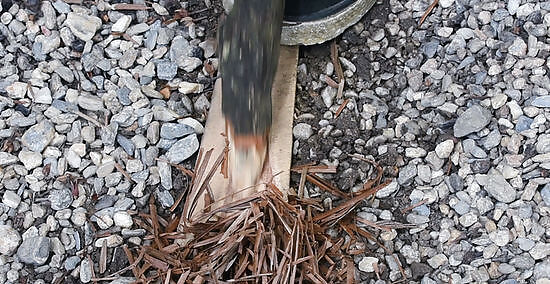
Create a fire plow out of softwood when you don’t have a lighter. Dig a groove into a flat piece of softwood with a pocket knife or another sharp tool. Using a stick or small branch, plow up and down the groove to create friction and heat. After a few minutes, the heat will intensify and ignite the wood particles created by the plowing motion. Use things like pens, metal skewers, and nails if you don’t have a knife. If you don’t have any metal tools, a smooth, sharp stick will also work.
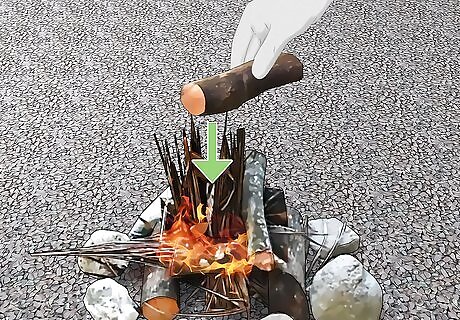
Add 1 or 2 small logs when your fire begins to burn down. There’s no need to add your entire supply of wood at once to keep your fire burning. When you notice the flames starting to die down and you just have hot coals remaining, pile 1 or 2 more pieces of fuelwood on top and a bit of tinder to help get the flames going. Avoid adding more than 2 small logs at a time. If you add more, you risk the possibility of sparks flying out and catching on something outside of your fire site.
Extinguishing Your Fire
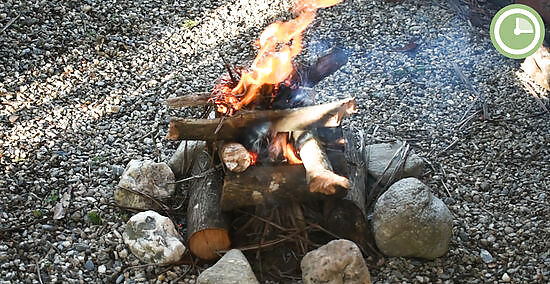
Start putting the fire out 20 minutes in advance. It takes a while to fully extinguish a fire, and it’s dangerous to leave a fire that’s still smoldering unattended. Have a general idea of when you’ll be leaving or going to bed so that you have plenty of time to properly put out the fire. Tip: If you have to leave your fire site at a certain time, set an alarm on your phone for 20 minutes prior to remind you.
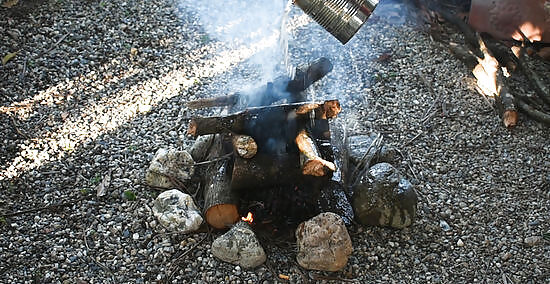
Sprinkle water slowly over the fire site. Tilt a bucket of water over the fire and distribute drops and small splashes of water onto the embers. Do this gently and gradually. A watering can, large water bottle, or another container will also serve to distribute water slowly over your fire site. Let your fire burn out completely before pouring water over it. If you see mostly white ash and no flames, your fire is likely burned out for the most part.Avoid dousing your fire with water, which will ruin the fire site if you want to use it in the near future.
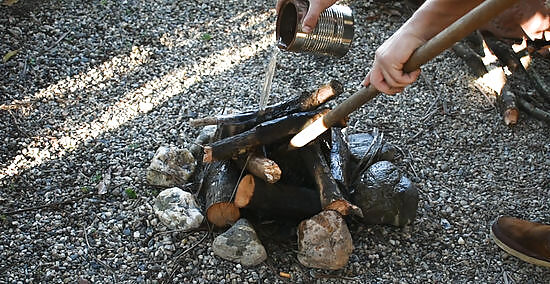
Stir the embers with a stick or shovel as you sprinkle the water. Make sure that all the embers in your fireplace get wet by turning them over as you sprinkle water on them. Use a stick or metal shovel to stir them. Be thorough and continue stirring until the fire is extinguished completely.
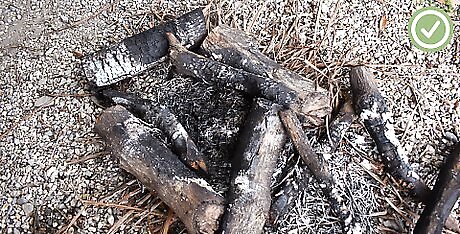
Check for steam, heat, or noise before leaving the fire site. Place your hand near the base of your fire site to make sure it feels cool. If you do not feel any heat emerging from the ground, it’s probably fully extinguished. Also, check to see if there’s any steam coming from the pile and listen for any hissing noises. These are both signs that there may still be some burning embers left. Do not place your hand directly on the ashes or embers to test if they’re still hot. Instead, let your hand hover a couple of inches above the fire site. If you see any steam or hear any hissing, continue to pour water onto the fire and stir the ashes until the heat and steam are completely gone. If you don't plan on using the fire site again, dump water over it. If there’s a lot of ashes built up in your fire pit, wait until they’re completely cooled off before sweeping them into a trash bag and throwing them out. If you’re staying at a campsite, there usually won’t be any rules stating you have to clean out the fire pit before leaving.


















Comments
0 comment